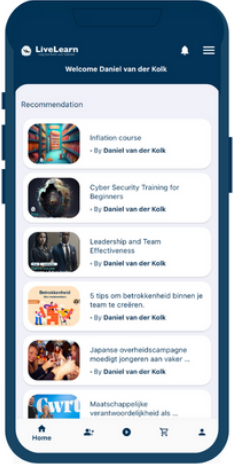
Artikel
02
May
5 Advanced Social Engineering Techniques and How to Mitigate Them
What Is Social Engineering?
Social engineering is a method used by cybercriminals that relies on human interaction and often involves tricking people into breaking normal security procedures. It is an art of deception, aiming to exploit the weakest link in the cyber defense system: the human element.
Social engineering attempts to manipulate people into providing access to valuable data or systems. The manipulation typically happens in stages:
-
- Initially, the attacker will investigate the intended victim to gather background information, such as their hobbies, work, etc.
-
- The attacker then uses this information to earn the victim’s trust and break down their defenses.
-
- Once the defenses are down, the attacker exploits this trust and deceives the victim into performing an action that could have serious consequences, such as divulging confidential information, transferring money, or downloading a malicious file.
Advanced Social Engineering Techniques and How to Mitigate Them
The most well-known form of social engineering is phishing. Let’s explore a few advanced, less-known social engineering techniques and methods individuals or organizations can use to prevent them.
1. Quishing
Quishing (QR code phishing) is a relatively new form of social engineering that exploits QR codes, a type of matrix barcode that can be scanned using smartphones. In quishing attacks, cybercriminals embed malicious links in QR codes. When victims scan these codes, they are directed to phishing websites or unknowingly download malware onto their devices. These QR codes can be physically placed in public areas or digitally embedded in emails or websites.
Educate Employees About QR Code Safety
Educating employees on the risks associated with QR codes is crucial. They should be trained to be suspicious of QR codes, especially those received via email or found in untrusted locations. Employees should know that legitimate organizations rarely request sensitive information via QR codes.
Implement Secure QR Code Scanning Solutions
Organizations can deploy secure QR code scanning solutions that check the safety of the link before opening it. These solutions can be integrated into company-issued devices to ensure that any QR code scanned is automatically vetted for security risks.
Establish Policies for External Content Interaction
Organizations should have clear policies regarding how employees interact with external content, including QR codes. These policies should outline acceptable practices and steps to follow if an employee encounters a suspicious QR code. This can include reporting the code to the IT department for further investigation.
2. Spear Phishing
Spear phishing is a targeted form of phishing where the attacker has a specific individual or organization in mind. The attacker often spends more time gathering information about the target to make the attack more believable. Here are some measures you can take to protect against spear phishing:
Use AI-Based Anomaly Detection
AI-based anomaly detection can identify unusual patterns in incoming emails that may suggest a spear-phishing attempt. This could be anything from a strange sender address to an unusual request within the email.
Implement Domain-Based Message Authentication (DMARC)
DMARC is an email authentication protocol that uses SPF (Sender Policy Framework) and DKIM (DomainKeys Identified Mail) to detect and prevent email spoofing, a common technique used in spear phishing.
Establish Policies for Verifying Sensitive Requests
Spear phishing emails often ask an employee to perform a sensitive action, such as make a bank transfer or provide administrative permissions, supposedly requested by an authority in the company. Many of these attacks can be prevented by setting a company-wide policy to only perform sensitive actions after calling the requesting party and verifying their request.
3. Pretexting
Pretexting is a social engineering technique in which attackers create a fabricated scenario (the pretext) to convince a target to disclose sensitive information or perform an action that benefits the attacker. Usually, the attacker pretends to need the information to perform a critical task. The success of pretexting relies on building trust with the victim.
Deploy Identity Verification Tools
One effective way to mitigate the risk of pretexting is to deploy identity verification tools. This strategy is particularly important in customer service and information-sensitive departments, as these are often the targets of pretexting attacks. Modern identity verification tools can use biometrics, knowledge-based authentication, or even behavioral patterns to ensure that the person on the other end of the communication is who they claim to be.
Use Multi-Factor Authentication for Information Requests
Multi-factor authentication (MFA) is another effective countermeasure against pretexting. MFA requires users to provide two or more independent credentials to verify their identity. This process creates additional challenges for attackers to impersonate a legitimate user, even if they’ve managed to compromise one set of credentials.
Implement Strict Information Disclosure Policies
Implementing strict information disclosure policies is a crucial step in safeguarding sensitive data. These policies should clearly define what information can be shared, under what circumstances, and with whom. Training staff to understand and adhere to these policies can help ensure a much lower risk of unwittingly disclosing data to an attacker.
4. Baiting
Baiting is a social engineering technique that exploits human curiosity and greed. Attackers leave a physical device, such as a USB drive, in a place where it will be found. The device is often labeled with something enticing to encourage the finder to insert it into a computer. Once the device is connected, it releases malware into the system.
Use Endpoint Protection Software to Detect and Block Malicious USB Devices
Endpoint protection software is a crucial tool in the fight against baiting. This software can detect and block malicious USB devices or scan their contents before allowing users to access them, protecting your systems even if someone falls for the bait.
Implement Secure Browser Settings and Web Filters
Baiting can also occur online, with attackers enticing victims to download malicious software. To combat this, organizations can implement secure browser settings and web filters. These tools can block access to known malicious websites and prevent downloading potentially harmful files.
Establish a Clear Policy on the Use of External Media and Software Downloads
Creating and enforcing organizational policies can also help mitigate the risk of baiting. These policies should outline the acceptable use of external devices and downloads and the steps to take if a staff member suspects they’ve found a baiting device.
5. Tailgating
Tailgating, or piggybacking, involves an attacker gaining physical access to a restricted area by following closely behind a legitimate user. The attacker often pretends to be an employee or a member of the cleaning crew.
Enforce Strict Badge/ID Access Controls and Guest Sign-In Procedures
To prevent tailgating, organizations should enforce strict badge or ID access controls. This means everyone must use their badge or ID to access secure areas. Likewise, a robust guest sign-in procedure can help keep track of everyone in the building and ensure that only authorized individuals gain access.
Train Employees to Be Aware of Their Surroundings and Challenge Unfamiliar Faces
Employee training is another essential aspect of preventing tailgating. Employees must know their surroundings and understand the risks of allowing strangers to follow them into secure areas. Encouraging a culture where it’s acceptable to challenge unfamiliar faces can also help enhance security.
Install Surveillance Systems and Alarms for Sensitive Areas
Finally, installing surveillance systems and alarms in sensitive areas can provide an additional layer of security. These systems can help detect unauthorized access and deter potential attackers.
Conclusion
While social engineering techniques can be sophisticated, simple and effective strategies can mitigate the risks they pose. Organizations can significantly enhance their security posture and protect their valuable data and resources by understanding these techniques and implementing the countermeasures discussed.
About the Author
Gilad David Maayan is a technology writer who has worked with over 150 technology companies, including SAP, Imperva, Samsung NEXT, NetApp, and CheckPoint. He produces technical and thought leadership content that elucidates technical solutions for developers and IT leadership. Today, he heads Agile SEO, the leading marketing agency in the technology industry.
What's your reaction ?
Follow us on Social Media
Recent posts

September 11, 2025
40 miljoen euro extra beschikbaar voor mkb-leningen

September 02, 2025
Arbeidsmarkt blijft krap, aantal banen neemt toe

August 30, 2025
Arbeidsmarkt blijft krap, aantal banen neemt toe

August 25, 2025
Kroatië en Estland zijn populaire landen voor digital nomads in 2025

August 20, 2025
Minder banen voor starters: AI speelt mogelijk een rol

 Inloggen
Inloggen
 Registreren
Registreren






Comments (0)
No reviews found
Add Comment